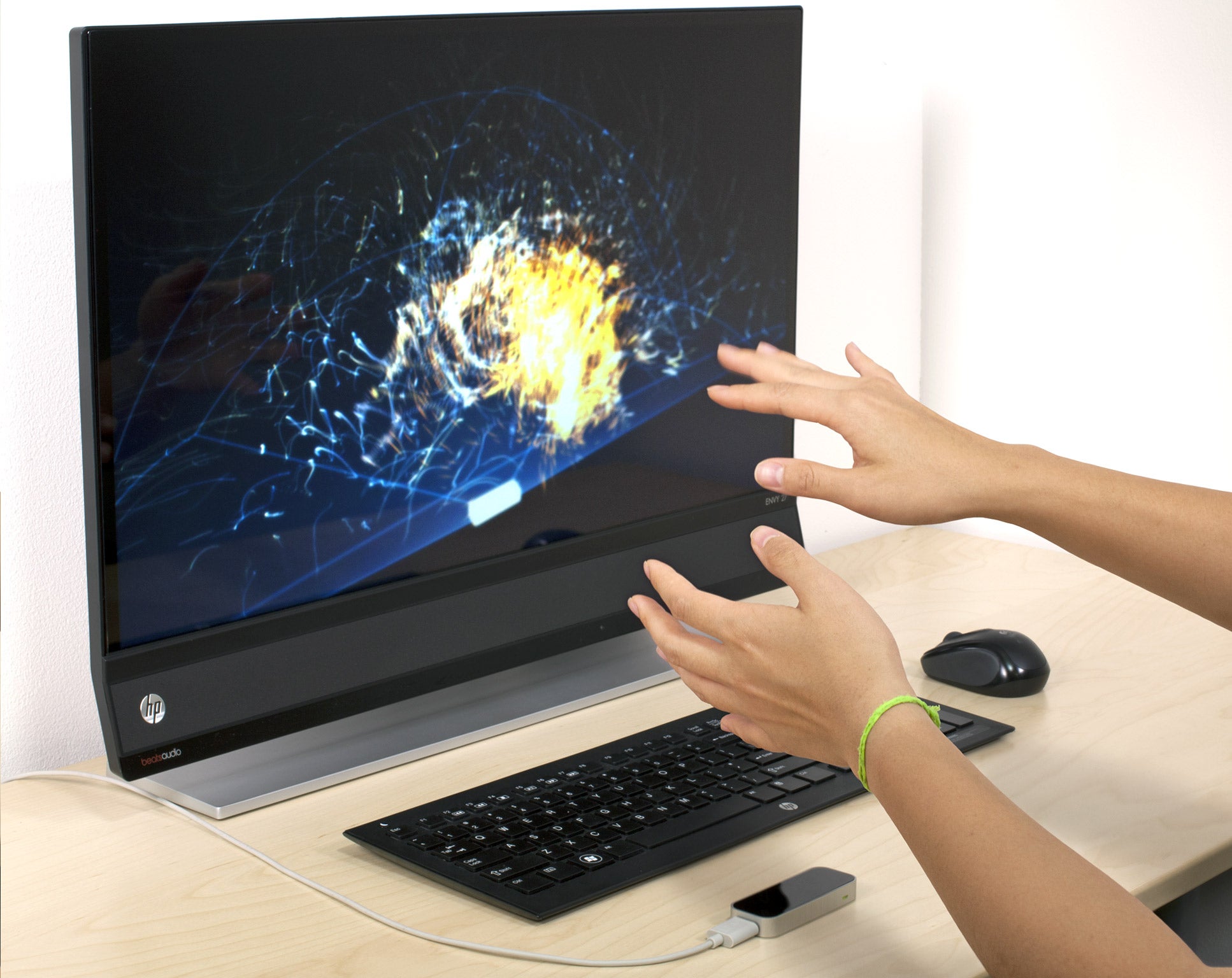A Week With: Leap Motion Controller
An idea that deserves a big hand – a pity it's not mine

Price: £62.99
Length: 7.6cm
Width: 3cm
What is it?
The thrilling future of computing: a tiny, motion-sensing device that sits in front of your laptop or PC and tracks your hand gestures. The aim is to allow you to ditch the mouse and keyboard and instead use your waggling digits to control all the action on your computer, like Tom Cruise did in Minority Report – or the character Tony Stark did in Iron Man.
How does it work?
The device sits on a flat surface in front of you, and using built-in infrared LEDs it projects an invisible three-dimensional dome of light into eight cubic feet of space above it. Two embedded cameras can then pick up any finger movements within that zone, down to a miniscule 1/100th of a millimetre.
What can I do with it?
Not much out of the box: first you'll need to download compatible apps from the device's "Airspace" app store, because they've all been designed specifically to work with this device. Right now there are only 75 motion-operated apps available, from games such as Cut the Rope, to newspaper apps, finger-painting programmes and even music-creation software.
Does it work?
Well, sort of: rarely has a device led to such wonder and frustration in equal measure. The good news is that, remarkably, there's no discernable time lag between air gesture and on-screen movement. And with a little practice, apps such as Google Earth are an exhilarating experience: using natural hand movements you can leap, dive and soar around the Google globe, flying past sights such as the Grand Canyon, feeling like you're Superman.
It also works well for more pedestrian pursuits: reading The New York Times' app shows what the nascent technology is currently good at: using simple circle gestures for browsing through articles, to make reading on a computer effortless.
Any drawbacks?
For many apps, hand control is clumsy. Finger painting with the Corel Painter app, in particular, shows the limits of the system: while the infrared sensor can track very precise movements, unless you're a surgeon your hovering fingers aren't steady enough to control the on-screen cursor to that precise degree, leading to works of art a six-year-old would scoff at.
Most disappointing of all was trying to work the Touchless for Windows app: using my unsteady fingers rather than my trusty mouse to scroll, drag and click around Windows 7 was like trying to type on a keyboard with my elbows: cumbersome, imprecise and so frustrating that I wanted to rip my arm off by the end of it.
What about the games?
There's a clutch of touch-controlled games in the store, many of them free. Some work exceptionally well and are great fun, such as Breakout clone Boom Ball. Others, such as Cut the Rope, work much more intuitively in their native format – a smartphone's touch screen.
Anything out there now that's similar?
Not for PCs, though there is, of course, the pricier motion-sensing Kinnect, for the Xbox 360, and the Xbox One's soon-to-be-released Kinnect 2. The latter promises even more sophisticated ways to track your motion, by detecting facial expressions and even your heartbeat. A version for the PC will eventually make its way over, which could be an even bigger game changer.
Is it worth buying?
The potential to pimp out your PC like Tony Stark's IT is exciting, but right now, as a 21st-century replacement for mouse, keyboard and even touch screens, it's too fiddly and frustrating. But as app makers get to grips with this tech, it could lead to a huge shift in how we control our computers (check out how German musician Ryo Fujimoto uses Leap Motion to beatbox), and when that time comes, I will greet it with open hands.
Join our commenting forum
Join thought-provoking conversations, follow other Independent readers and see their replies
Comments
Bookmark popover
Removed from bookmarks